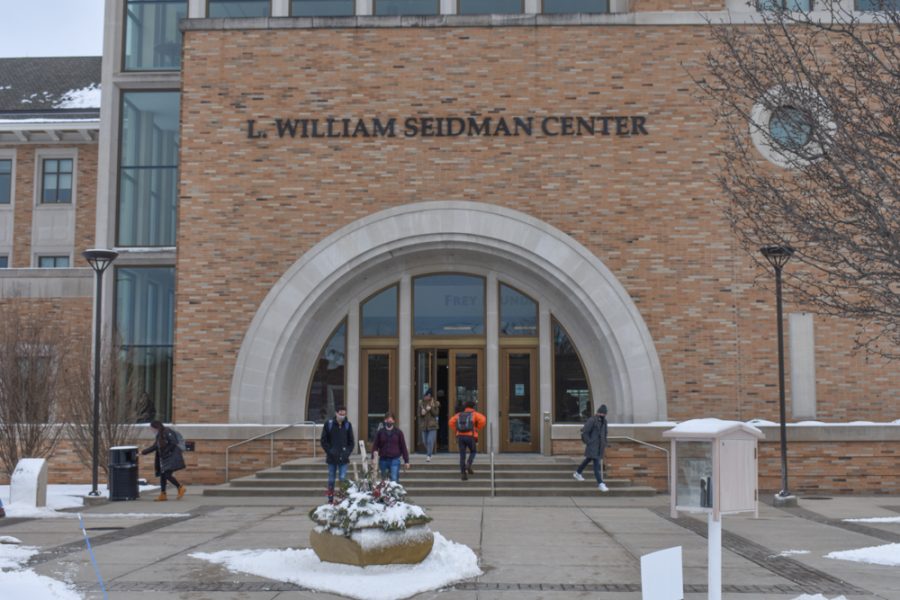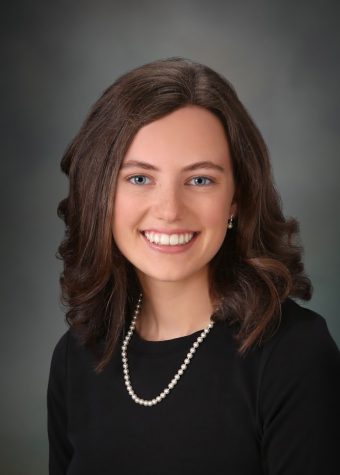GV presents 2022 Health Check
Feb 14, 2022
The 2022 Health Check: Analyzing Health in West Michigan report was presented virtually on Feb. 3.
Commissioned by Grand Valley State University, the Health Check is an annual report focused on health-related trends, costs and employment projections in West Michigan. It’s conducted annually by GVSU economics faculty and complemented by a panel of health experts, according to the Health Check website.
This year’s event featured presentations from GVSU Professor of Economics Gary Simmons, Erkmen Aslim and Dan Montanera, both assistant professors of economics at GVSU. Presentations were followed by a Q&A session where questions submitted by the audience during the webinar were answered.
Next, healthcare panelists including Elizabeth Hertel, Director of Michigan Department of Health and Human Services, Matt Biersack, President and Chief Medical Officer of Mercy Health Saint Mary’s, Darryl Elmouchi, President, BHSH Spectrum Health West Michigan and Ronald G. Grifka Chief Medical Officer of Metro Health-University of Michigan Health, shared presentations and responded to questions in a Q&A session.
Aslim, who has worked on each heath check report since 2020, said that the report offers real-time data and analysis of the current situation in West Michigan healthcare. In the 2022 Health Check, this meant a focus on the COVID-19 pandemic and disparities among residents of Kent, Ottawa, Muskegon and Allegan (KOMA) counties.
In addition to analyzing the data behind burnout in medical professions and healthcare recovery spending in the 2022 report, Aslim said there were two key takeaways regarding disparities in this year’s Health Check.
“First, we found that non-white individuals have limited access to health insurance and care, in KOMA,” Aslim said. “The second takeaway was that we observed an increase in risky health behaviors among non-white individuals in KOMA.”
“Risky behaviors” include things like cigarette and e-cigarette consumption, alcohol consumption, drug use and poor diet, Aslim said.
The study also found that women in KOMA have more leftover prescription pain medications than men. Aslim said that while this isn’t a positive finding to report, it means there could be potential change to combat issues like opioid misuse and accidental poisoning in the future.
“When we look at individuals in general, what do they do with their leftover medications? They keep it at home,” Aslim said. “I was able to talk about policies that could increase awareness about proper ways of disposing of these pain medications or promote drug take-back events.”
Aslim said that this potential to effect change is one reason the annual Health Check report is important to him and to GVSU.
“We really care about our community, and we really want to inform policymakers if things are going wrong, we want to be able to say ‘look, we analyze the data and here are the results,’” Aslim said. “Then we can also propose certain policies that could potentially mitigate the negative effects.”
One policy recommendation Aslim gave was regarding nurse burnout during the Q&A session.
“The reason that we’ve observed some of these quits is due to job satisfaction and the main reason for that would be increased patient to nurse staffing ratios,” Aslim said. “Many states don’t have regulations on these ratios, so an important policy for states to consider is to, regulate these patient-to-staff ratios, and maybe put a cap on them.”
Aslim said work on the annual Health Check begins in the summer and is presented at the beginning of the new year. Despite this slight delay, the data and results presented are valuable for the West Michigan healthcare community.
The full report and recording of the 2022 Health Check presentation are available online, along with past year’s reports and presentations.



























